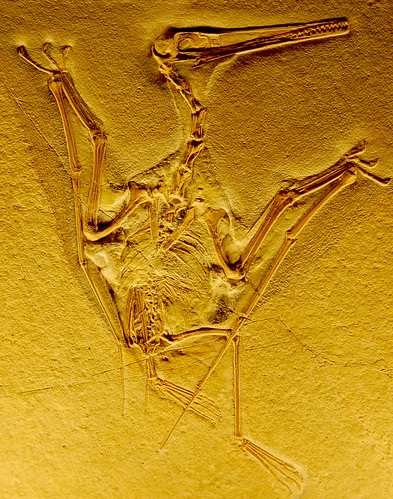
Not on a smaller Earth: Pterodactyls were too heavy to fly, scientist claims.
The new research claims that the ancient reptiles, which could grow to the size of small aeroplanes, were too heavy to fly - even with their massive wings.
The problem, according to a leading scientist, is that they could not flap fast enough to create the thrust to keep their enormous bulk airborne.
The 'dinosaur' popularly known as a pterodactyl is actually called a reptile called a pterosaur, which is Greek for flying lizard.
It existed alongside the dinosaurs between 251 and 65 million years ago, and were thought to be the biggest creatures to ever take to the air.
The fossilised remains of one example had a wing span of more than 15 metres.
But Katsufumi Sato, a Japanese scientist, who collected data from five large birds including the world's biggest, the wandering albatross, has calculated that it was physically impossible for them to stay aloft.
The University of Tokyo professor claims that the largest animal capable of soaring across the sky unaided could have weighed no more than 40kg (88lbs) or the size of a labrador dog.
Maybe they jumped and glided from trees.
ReplyDeleteIf the Earth was approximately the same mass, but the volume were more compressed, then (1) the atmospheric pressures and air densities would have been greater which and (2) the Earth's angular spin velocity would have been greater. This scenario would be indicated by Earth expansion due to iron changing structure.
ReplyDeleteHowever, if the Earth contained much less mass and less volume at one time, then there should have been a lot less atmosphere on Earth by now like on Mars.